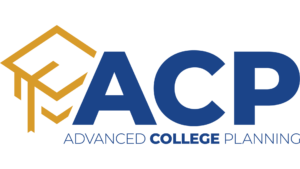Why You Need a College Planning Toolkit in 2025
College costs are rising. Admissions are more competitive. Financial aid rules are evolving. In 2025, families need more than good intentions—they need data-driven tools to plan smart, save time, and reduce stress.
This guide breaks down seven AI-powered and expert-approved tools every family should use to navigate the complex college planning landscape—from estimating true costs to forecasting aid, finding scholarships, and tracking admissions data.
1. Net-Price Calculators: Know the True Cost of College
What is a Net-Price Calculator?
A Net-Price Calculator (NPC) estimates how much you’ll actually pay for college after grants and scholarships are applied—not just the published tuition price.
🔍 Why It’s Essential in 2025
Colleges often present a “sticker price” that doesn’t reflect what most families pay. NPCs expose hidden discounts, making it easier to compare real affordability across schools.
🏆 Best Tool: College Abacus
College Abacus aggregates data from 5,000+ colleges’ calculators, letting you compare net prices side-by-side in one place.
💡 AI Advantage:
Some NPCs now integrate predictive models to estimate merit aid based on your GPA, test scores, or income bracket.
👨👩👧 Family Tip:
Run NPCs for both in-state and private colleges—you might be surprised which schools are actually more affordable.
2. FAFSA Estimator: Forecast Your Federal Financial Aid
What is the FAFSA Estimator?
Formerly known as the FAFSA4Caster, this tool gives an early estimate of your eligibility for federal financial aid, including Pell Grants, loans, and work-study.
🗓️ When to Use It
Use it in October, the same month FAFSA opens. Many colleges have priority aid deadlines in November or December.
🏆 Best Tool: FAFSA Estimator
Backed by the U.S. Department of Education, this tool projects your Student Aid Index (SAI) based on family income, assets, and household size.
💡 AI Advantage:
New versions apply machine learning to suggest aid ranges from multiple colleges based on your inputs.
✅ Pro Tip:
Take a screenshot of your results and use them to build a budget or to compare aid offers later.
3. Scholarship Search Engines: Maximize Free Aid Opportunities
What Are They?
These platforms match students to thousands of scholarships, grants, and contests using a personal profile.
🏆 Top Picks:
- FastWeb – Offers filtered searches by major, background, and deadline.
- Scholarships.com – Features $19 billion in awards and daily updates.
🔍 Why Use Them?
Many scholarships go unclaimed. A consistent search strategy can uncover local, niche, and private scholarships not listed on FAFSA.
💡 AI Advantage:
Some tools now use AI to auto-match students with personalized scholarships and provide essay feedback.
📆 Action Plan:
Set up weekly alerts for new scholarships and apply to at least 2–3 each week.
4. Personalized Aid Prediction Tools: Get Custom Forecasts
What Are They?
These are AI-powered platforms that go beyond averages, generating financial aid predictions tailored to your academic profile, family finances, and college list.
🏆 Best Tool: Edmit
Edmit uses machine learning to project total cost, merit aid, and debt after graduation. It even shows financial outcomes by major.
🧠 How It Works:
Input your GPA, test scores, zip code, and financials, and Edmit builds a predictive model unique to your situation.
🔍 Why It’s Powerful:
Unlike standard NPCs, these tools consider historical patterns and simulate outcomes across multiple scenarios.
🎯 Use Case:
Great for families with multiple children or complex financial situations who want a more dynamic planning view.
5. Impacted Majors Trackers: Avoid Hidden Competition
What Is an Impacted Major?
An impacted major is one where demand exceeds available spots—common in California’s UC system and popular programs like nursing, engineering, and CS.
🏆 Best Resource:
UC Impaction List – Tracks capacity restrictions by major, by campus, and by year.
💡 AI-Enhanced Forecasting:
Some trackers now use enrollment data to predict next year’s impacted majors—helping you pivot before it’s too late.
📌 Why It Matters:
Applying to an impacted major may reduce your admission odds, even if you’re academically qualified.
🧭 Planning Tip:
If your intended major is impacted, consider applying undeclared or choosing a related program with a clearer path.
6. Common Data Set Explorer: Benchmark Your Chances
What Is the Common Data Set (CDS)?
The CDS is a standardized set of data released by colleges covering admissions rates, GPA ranges, test scores, yield, and more.
🏆 Best Tool: CDS Explorer at CCMRwithMsThrash
This free, open-source resource compiles CDS data into visual dashboards, so you can compare your profile to admitted students.
🔍 Why It Matters:
CDS data helps you build a balanced college list based on real stats—not hearsay or rankings.
💡 AI Bonus:
Some platforms overlay CDS with your student data to assess likelihood of acceptance in real-time.
👨🏫 Expert Tip:
Use CDS data to refine your list into reach, match, and safety categories—and track admit rate trends.
7. Interactive College Planning Platforms: Make It a Family Activity
What Are They?
Interactive platforms guide students and families through tasks like course planning, essay writing, and deadline tracking via gamified dashboards.
🏆 Example: USC Games’ College Simulator
This tool lets students visualize their application journey with progress meters, alerts, and tips built in.
💡 Why It Works:
Gamification keeps students engaged and parents in the loop. It also ensures no deadline slips through the cracks.
👨👩👧 Family Engagement Tip:
Schedule a weekly “college planning check-in” night to review tasks, update goals, and celebrate wins.
Conclusion: Plan Confidently, Apply Strategically
In 2025, college planning doesn’t have to be chaotic. With AI-enhanced tools and data-driven insights, you can turn guesswork into a strategic advantage. Whether you’re comparing costs, forecasting aid, or tracking deadlines, the seven tools above are your blueprint for smarter decisions and less stress.
Final Checklist for Families:
✅ Compare real college costs with Net-Price Calculators
✅ Use FAFSA Estimator for aid forecasting
✅ Set alerts on scholarship platforms
✅ Leverage AI-powered tools like Edmit
✅ Research impacted majors before applying
✅ Use CDS data to build a realistic college list
✅ Stay organized with gamified planning platforms
📞 Need Personalized Help?
At Advanced College Planning, we go beyond the tools—we help you build a customized roadmap that fits your student’s goals, strengths, and family budget.
👉 Schedule a free consultation now and take the stress out of college planning.



